In the world of pet ownership, there’s a unique language that only those who share their homes with furry, feathery, or scaly friends can truly understand. Pets have a special way of communicating their needs, desires, and affections that often leaves outsiders puzzled. From the way your cat knocks things off the table to your dog’s excited zoomies after dinner, each behavior carries a deeper meaning. So, let’s dive into this world and explore the pet behaviors that only dedicated pet parents can decode.
1. The Midnight Zoomies Are a Thing
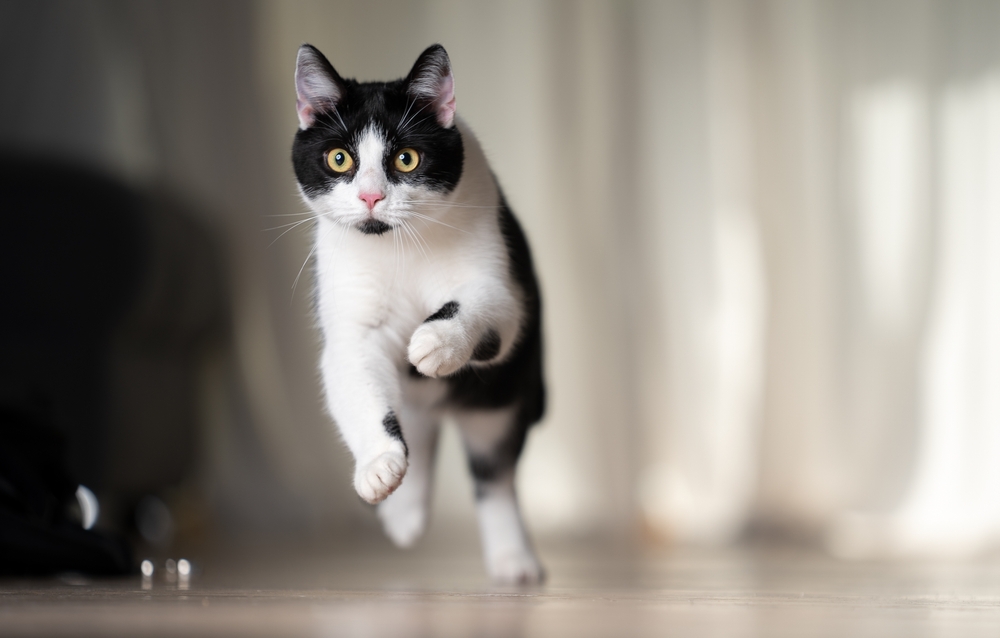
Ever been jolted awake by the sound of your cat sprinting through the house at 3 AM? This phenomenon, affectionately known as the “midnight zoomies,” is a classic feline behavior. It’s a burst of energy that can be likened to a toddler’s sugar rush, and it often leaves pet owners laughing or groaning in the middle of the night. Your cat isn’t losing their mind; they’re simply acting on their natural instincts. According to PetMD, the “midnight zoomies” in cats are bursts of pent-up energy, often reflecting their natural hunting instincts.
Dog owners aren’t strangers to zoomies either. It can happen after a bath, a meal, or sometimes just because the air smells particularly interesting. When dogs get the zoomies, it’s usually a sign of happiness and excitement. You’ll see them sprinting in circles, often with a crazy gleam in their eyes. While it might seem chaotic, it’s harmless fun. Just make sure there’s nothing they can knock over or injure themselves on during their wild runs.
2. The Mysterious Head Tilt
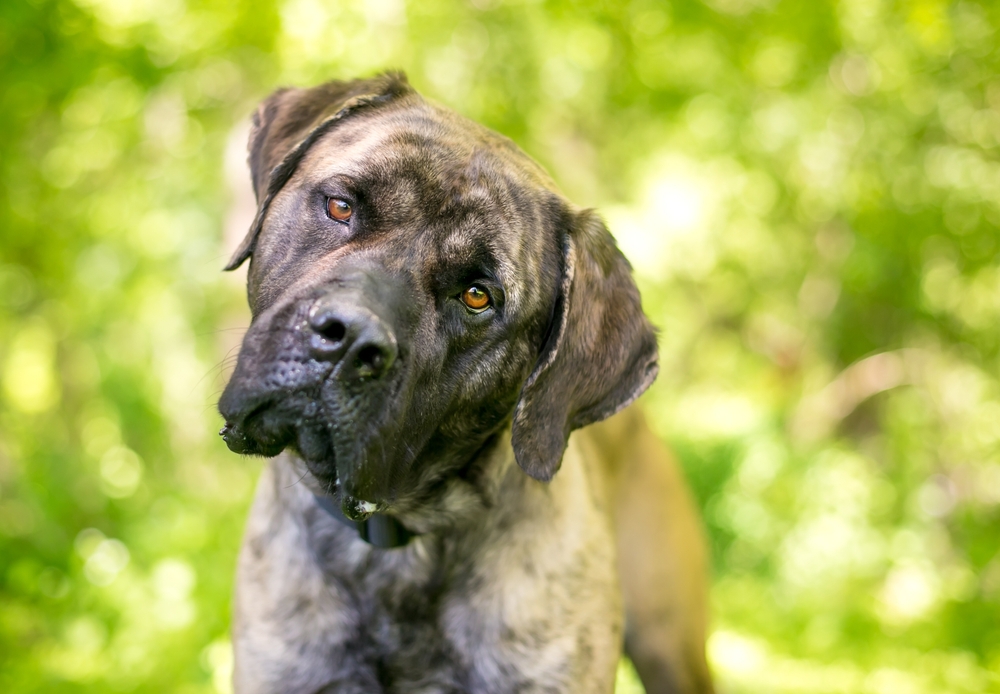
There’s something undeniably adorable about the way dogs tilt their heads to the side when you talk to them. This quintessential canine behavior has melted the hearts of dog owners for generations. But what’s really going on? Scientists believe the head tilt is a dog’s attempt to hear better and process what you’re saying. As noted by AKC, dogs tilt their heads to better hear and process what you’re saying, often trying to pick up on emotional cues.
For pet owners, this head tilt becomes a delightful invitation to continue the conversation. It’s as if your dog is saying, “I’m listening; please go on.” And while they might not grasp every word, they’re certainly attuned to your tone and emotions. Over time, some dogs even learn that their head tilt gets them treats or extra affection, thus becoming a delightful part of their charm. So, the next time your pup pulls that adorable move, know they’re connecting with you in the best way they know.
3. The Infamous Belly Exposure
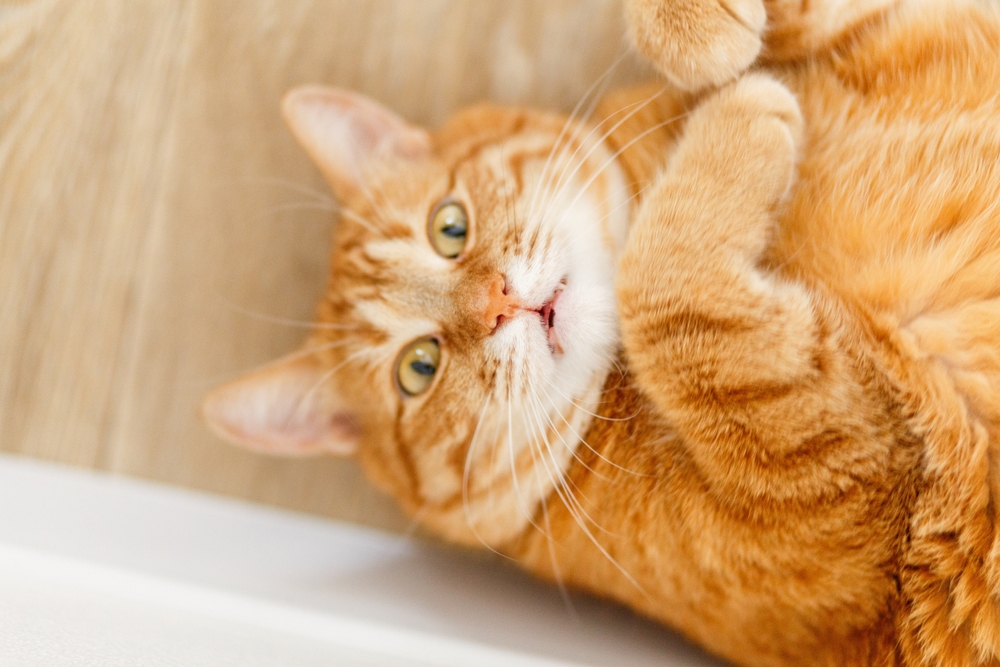
When a cat flops onto their back and exposes their belly, it seems like an open invitation for a belly rub, right? Not so fast! This behavior is often a sign of trust, not a request for tummy scratches. Cats expose their bellies to show that they feel safe and secure in your presence. However, reaching out to pet that soft belly might result in a swift, clawed retaliation. It’s a trap that many well-meaning cat owners fall into, thinking it’s an invitation for affection.
Conversely, dogs generally love a good belly rub when they roll over. This behavior in dogs is often a sign of submission and trust, and they usually adore a gentle scratch. It’s their way of saying, “I trust you enough to be vulnerable.” Over time, you’ll learn to read the subtle cues of whether your pet is seeking a rub or just showing you their trust. And for those rare cats that do enjoy a belly pat, consider yourself truly honored.
4. The Peculiar Tail Flick
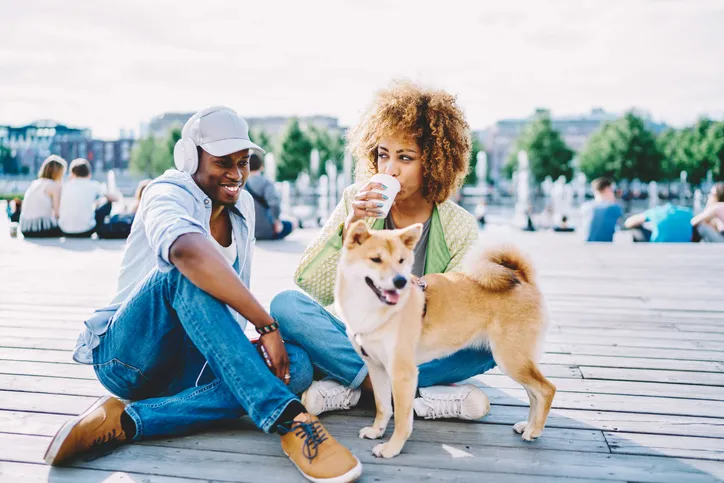
Cats have a unique way of communicating through their tails, and experienced cat owners know that the flick of a tail can say a thousand words. A slow, swaying tail often signals contentment or curiosity, while a quick flick can mean agitation or annoyance. It’s a language that’s as nuanced as it is fascinating. Watching their tails can give you a real-time insight into their mood. When their tail flicks rapidly while you’re petting them, it might be time to stop before they decide to act on their irritation.
In the dog world, tail wagging is usually a sign of happiness, but it’s not always so straightforward. A wagging tail doesn’t always mean they’re friendly. The speed, direction, and position of the wag can convey different emotions. For example, a high, fast wag might mean excitement or readiness to play, while a low wag can signify submission. Understanding these nuances can help prevent misunderstandings and ensure smooth communication between you and your pet.
5. The Kneading Ritual
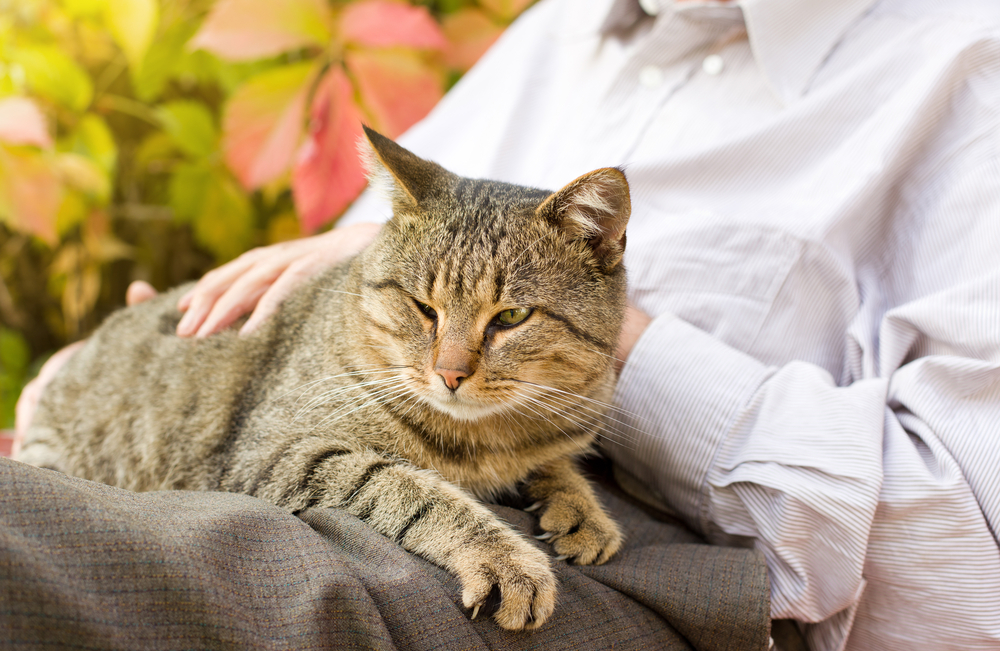
If you’ve ever had a cat, you’ve likely experienced the rhythmic kneading of their paws against your lap or a soft surface. This behavior harks back to kittenhood when they would knead their mother’s belly to stimulate milk flow. As adults, cats often knead to show contentment and comfort. It’s a sign that they feel safe and secure with you, essentially marking you as their own. The gentle pressure of their paws, often accompanied by purring, is their way of saying, “I love you.”
Dogs have their own version of this comforting behavior. They often “make biscuits” or paw at blankets, pillows, or even you before settling down. This nesting behavior is a leftover instinct from their wild ancestors, who would dig to make a comfortable sleeping spot. If you catch your dog pawing at their bed or a cozy spot on the couch, it’s their way of settling in. Both cats and dogs find comfort in these rituals, reinforcing their bond with their humans.
6. The Loving Head Bump
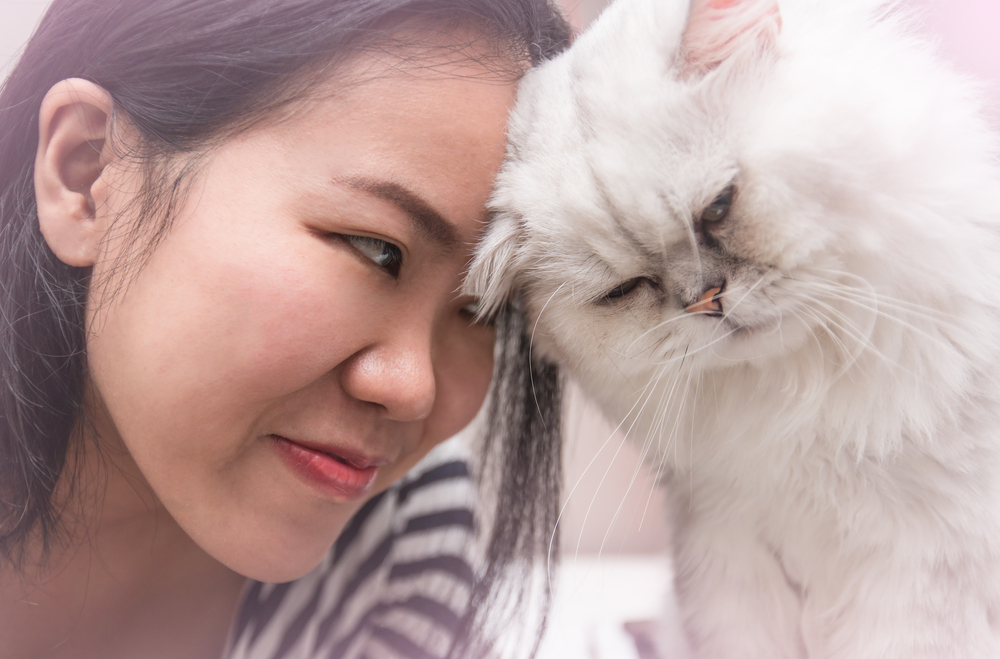
When a cat headbutts you, it’s not just a quirky affection show—it’s a deep-seated feline ritual. Known as “bunting,” this behavior involves your cat using their head to gently nudge you. It’s a sign of trust and love, as they’re marking you with their scent from glands located on their head. This scent-marking behavior essentially labels you as part of their territory. For cat owners, receiving a head bump is akin to being told, “You’re part of my family.”
While dogs might not headbutt, they have their own affectionate gestures. They typically use their noses to nudge you, seeking attention or comfort. This gentle nudge is their way of bonding and saying, “Hey, I’m here, pay attention to me.” These subtle gestures from both cats and dogs are their unique ways of expressing love and inclusion in their world. It’s the special language of affection that seasoned pet owners learn to cherish.
7. The Window Stalk
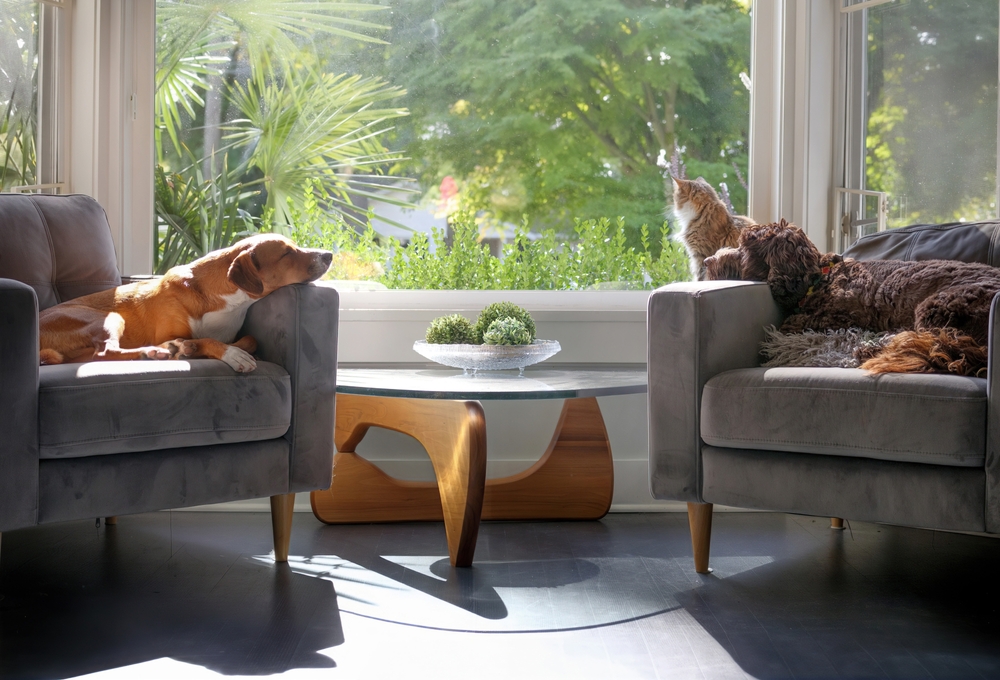
Ever notice your cat sitting by the window, intensely focused on something outside? This behavior, known as “birdwatching” or “window stalking,” showcases their predatory instincts. Cats are naturally curious and have a strong prey drive, so watching birds, squirrels, or even leaves blowing in the wind can captivate them for hours. This is their form of entertainment and mental stimulation, akin to watching a thrilling documentary. Pet owners often enjoy watching their cats’ reactions, sometimes accompanied by chattering noises and tail twitches.
Dogs, too, enjoy a good window watch, albeit for different reasons. They’re typically on the lookout for potential intruders, whether it be the mail carrier or a passing dog. This vigilance stems from their protective instincts, as they keep an eye on their territory. It’s their way of ensuring the safety of their home and pack. Both cats and dogs find great satisfaction in window watching, making it a favorite pastime for pets and their owners alike.
8. The “Gift” Presentation
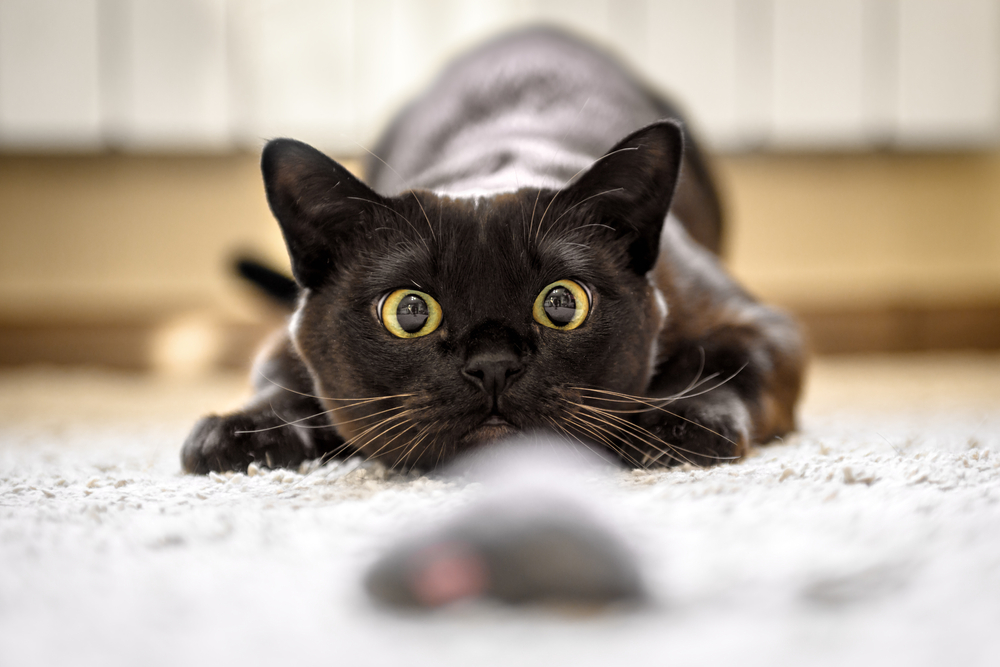
Every cat owner has likely experienced the “gift” of a small, lifeless critter left on their doorstep. While it might be unsettling, it’s actually a sign of affection and trust. Cats bring “gifts” to their humans as a demonstration of their hunting prowess. It’s their way of providing for the family, showing their skill and love. Though it may not be the present you hoped for, it’s a genuine gesture from your feline friend.
Dogs have their own version of gift-giving, often bringing you their favorite toy or a treasured item. When your dog drops their slobbery toy at your feet, it’s a sign that they trust you and want to play or share their prize. It’s their way of including you in their world of fun and possession. Both behaviors showcase a deep bond between pets and their owners, reflecting trust and a desire to connect.
9. The Mysterious Chirp
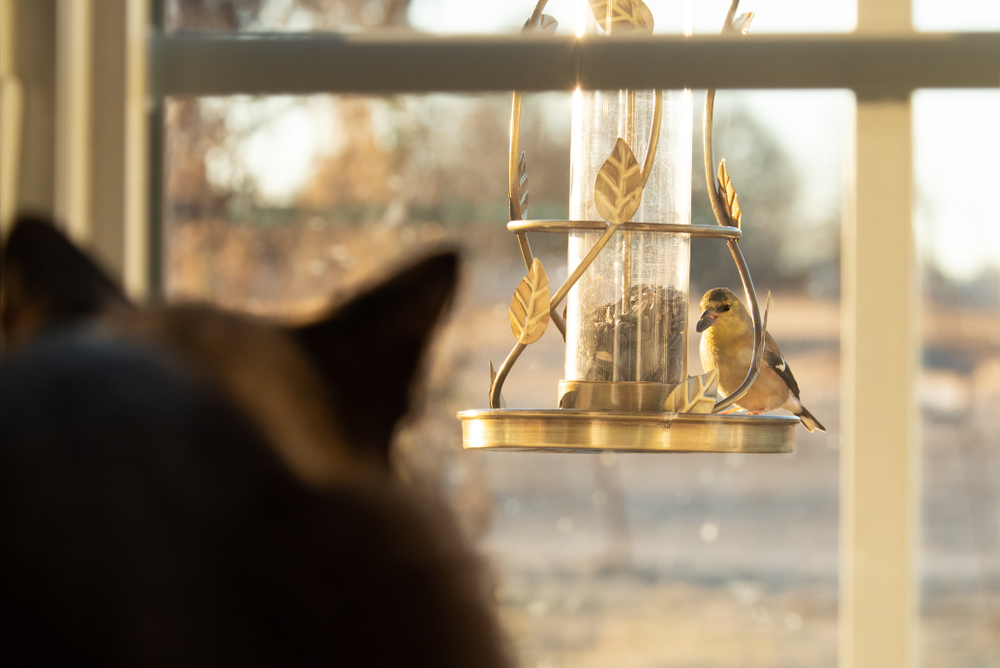
If you’ve ever heard your cat make a series of short, high-pitched noises, you’ve experienced the famous “chirp.” Cats often make this sound when they’re watching birds or other prey from a distance. It’s thought to be a mix of excitement and frustration at not being able to catch their target. This behavior is deeply rooted in their predatory instincts. It’s as if they’re trying to mimic bird calls or express their eagerness for the hunt.
Dogs might not chirp, but they do have a range of vocalizations to express themselves. From barks to whines to playful growls, each sound has a distinct meaning. A dog’s vocalizations can convey excitement, fear, or even a simple request for attention. Understanding these sounds is part of the journey of becoming a seasoned pet owner. Just as cat owners learn to interpret chirps, dog owners become adept at reading the nuances of their furry friend’s language.
10. The All-Knowing Stare
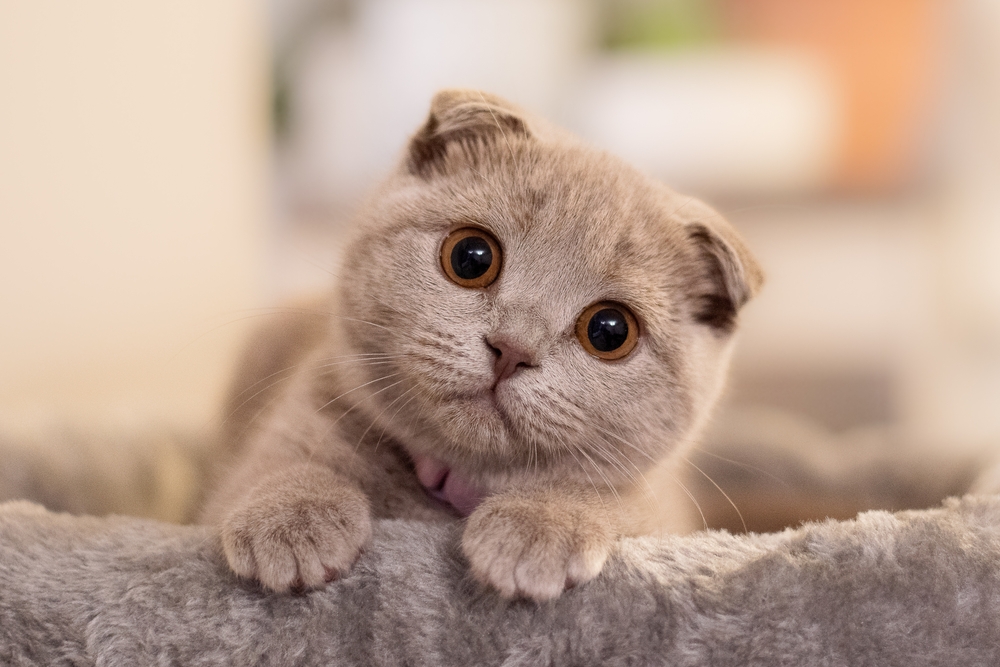
Cats are notorious for their intense, unblinking stares. This behavior can be both endearing and eerie, leaving owners wondering what their feline friend is thinking. In the cat world, staring often serves as a form of communication and observation. Cats use their gaze to take in their environment and assess situations. An unblinking stare can also be a sign of trust, as they feel comfortable enough to keep their eyes on you without fear.
Dogs also have a way of staring that can melt your heart or make you feel under scrutiny. When a dog looks at you with soft eyes, it’s often a sign of love and attachment. They’re trying to read your emotions and understand your mood. Dogs have evolved alongside humans for thousands of years, making them experts at interpreting our facial expressions. Both cats and dogs use their stares as a way to connect, communicate, and bond with their humans.
11. The Laundry Basket Love Affair
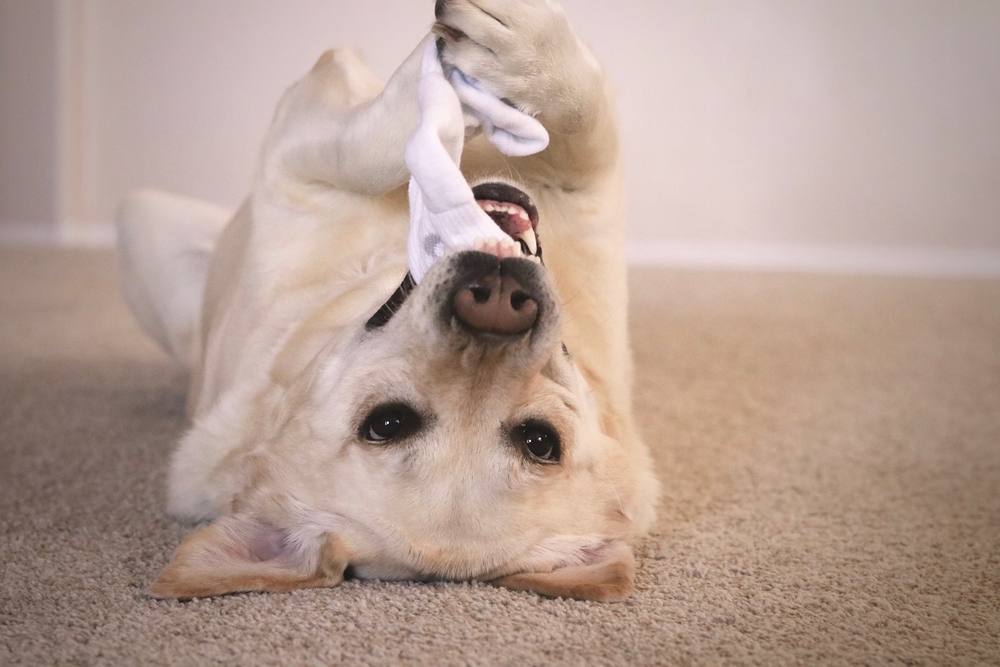
If you’ve ever found your cat nestled in a pile of freshly laundered clothes, you’re not alone. Cats are drawn to warm, cozy places, and a basket of laundry provides the perfect sanctuary. The warmth, combined with the familiar scent of their favorite human, makes it irresistible. It’s not just about comfort; it’s a way for your cat to feel close to you, even when you’re not around. For cat owners, finding a fur-covered shirt is just part of the territory.
Dogs, on the other hand, might not cozy up in your laundry but will happily drag around a piece of clothing that smells like you. This behavior is rooted in their strong sense of smell and deep bond with their owner. Having something that carries your scent can be comforting to them, especially when you’re away. It’s their way of feeling connected and close to you. Both cats and dogs find solace in the scents and warmth of their humans, making laundry day a little more interesting.
12. The Water Bowl Splash
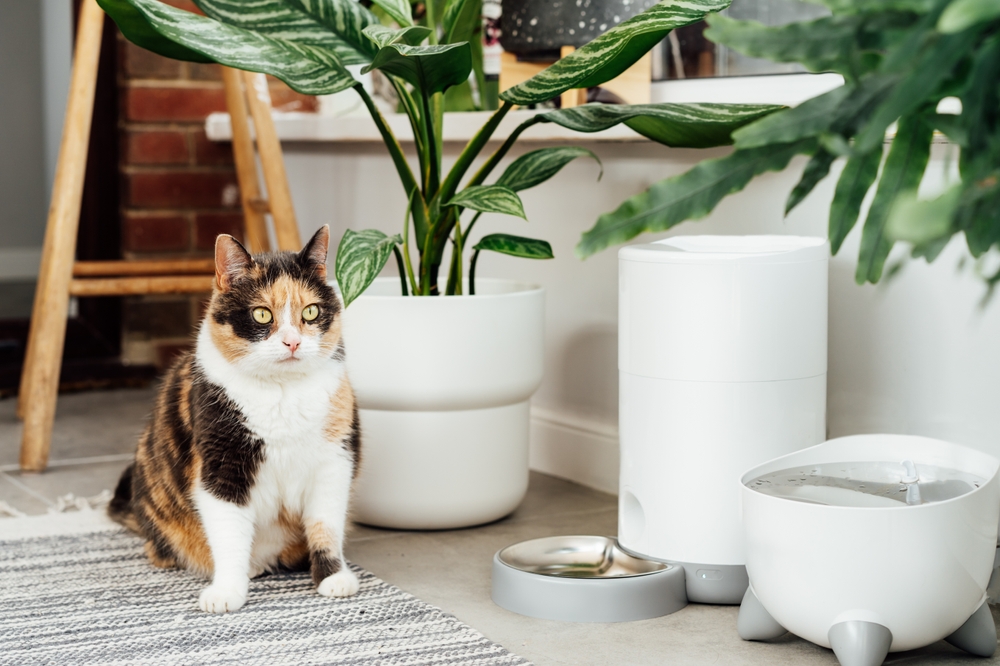
Does your cat have a habit of splashing water out of their bowl or tipping it over entirely? While it might seem like a mischievous act, there’s more to it. Cats are curious creatures and sometimes play with water to test its depth or create movement. It’s a way for them to engage with their environment and stimulate their senses. For some cats, this behavior is a sign of dissatisfaction with their water source, prompting owners to explore alternatives like water fountains.
Dogs, too, can exhibit quirky behaviors with their water bowls. Some dogs love to dig in their water or bathe their faces, making a delightful mess. This playful behavior is often a sign of boredom or an attempt to cool off in warm weather. Understanding these behaviors helps pet owners provide appropriate enrichment and solutions, like ensuring constant access to fresh, clean water. Both cats and dogs have unique ways of interacting with their environment, making every day an adventure for their human companions.
13. The Playful Pounce
Cats are natural hunters, and their playful pounce is a testament to their predatory instincts. This behavior is not just for kittens—adult cats also love to stalk and pounce on toys, shadows, or even unsuspecting human feet. It’s a way for them to channel their instincts in a safe and fun manner. Owners often enjoy watching their cats’ graceful and sometimes comical attempts to catch their “prey.” This playfulness is essential for their physical and mental well-being.
Dogs have their own version of the playful pounce, often seen during play with other dogs or humans. This behavior, known as the “play bow,” involves lowering their front legs while keeping their rear end in the air. It’s an invitation to engage in a fun, energetic game. This gesture is universal in the dog world and is a sign of friendliness and excitement. Both cats and dogs use play as a way to bond, exercise, and engage with their environment, providing endless entertainment for their owners.
14. The Elusive Hide and Seek
Cats are masters of the hide-and-seek game, often vanishing into the most unexpected places. This behavior is rooted in their instinctual need for safety and solitude. Whether it’s a box, closet, or under the bed, these hiding spots provide a sense of security. For cat owners, this means occasionally playing detective to find their elusive feline friend. Understanding this behavior helps ensure your cat has safe and accessible hiding places.
Dogs also enjoy a good game of hide-and-seek, though they often prefer being the seeker. This playful activity is a great way to engage their natural instincts and provide mental stimulation. It’s also a wonderful bonding experience for dogs and their humans. By incorporating treats or toys, owners can make this game even more enticing. Both cats and dogs find joy in the mystery and challenge of hide-and-seek, each in their unique way.
15. The Never-Ending Sniff
Dogs are famous for their extraordinary sense of smell, and the never-ending sniffing is a testament to this ability. When a dog sniffs, they’re gathering information about their environment, other animals, and even humans. This behavior is as natural as breathing for them and is crucial for communication and exploration. Owners often find themselves waiting patiently as their dogs investigate every nook and cranny during walks. Understanding this behavior can enhance training and bonding experiences.
Cats also have a keen sense of smell and use it to navigate their world. While they might not engage in prolonged sniffing like dogs, cats are often seen scenting new objects or people. This behavior helps them gather information and establish their territory. For both pets, scent is a powerful tool for understanding and interacting with their surroundings. Recognizing the importance of scent in your pet’s life can lead to a deeper appreciation of their unique behaviors.
